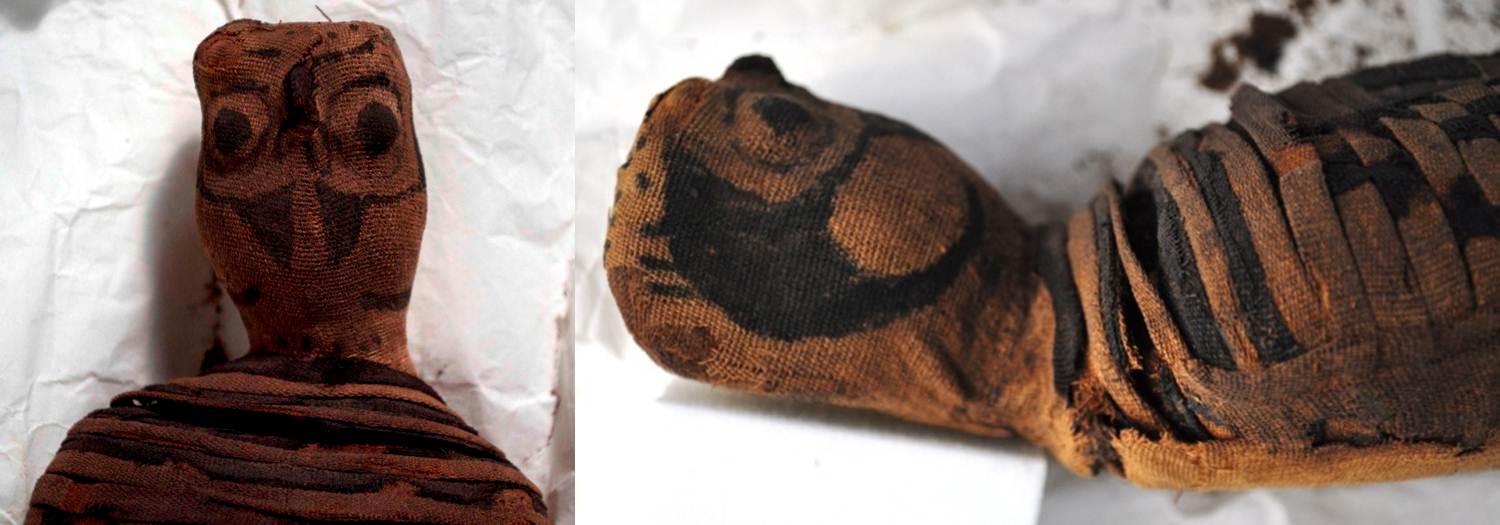A couple weeks ago, I introduced you to our child mummy Tanwa, and now I’m happy to report that I’ve completed her conservation treatment.
Tanwa has been in our collection since 1898; she was collected through the American Exploration Society, an organization founded by Sarah Yorke Stevenson, the museum’s first curator of the Egyptian section.
Tanwa was exhibited in the museum early on, but she has not been on display for a long time. When she came up to the Artifact Lab, we could see that she was generally in good condition, expect for the fact that some of the narrow bandages wrapped around her body, especially those around her feet, were fragile, torn, and partially detached. Many of the strips on the underside of her body were also damaged – although these aren’t usually visible since Tanwa is always lying on her back, they are at risk of detaching with any movement or handling.
After fully documenting Tanwa’s condition, I first removed excess dust and grime from the surface of her wrappings using a soft-bristled brush and a HEPA-filtered vacuum. Cleaning the exterior surface significantly brightened the linen, and I think at this point Tanwa was already looking much better.
Tanwa had a few straight pins stuck into her wrappings in areas, apparently as a measure to temporarily secure some of the fragile linen. I removed all of these pins and adhered the linen in place as necessary with small amounts of methyl cellulose adhesive.

A pin stuck into the bandages on Tanwa’s head (left, indicated by red arrow) was removed and the linen was secured to prevent further loss (right, after treatment)
I then proceeded to repair the linen around her feet and in all other places where the linen was fragile and at risk of detaching or becoming further damaged. All repairs were carried out using similar materials and methods to those I used to repair our falcon mummy. Distorted linen was relaxed and reshaped by humidification with either a damp blotter and Gore-tex sandwich, or using the Preservation Pencil. Detached linen was tacked down using a 6% solution of methyl cellulose adhesive, and fragile areas of linen were backed/supporting using Japanese tissue paper toned with acrylic paints.

Backing a fragile area of linen with toned Japanese tissue paper – the blue clamp is holding everything in place while the adhesive dries
Here are some after treatment details to compare to the before treatment shots seen in the second image on this post:
All of Tanwa’s linen wrappings are now fully stabilized and she is ready to be exhibited for the first time in decades!













